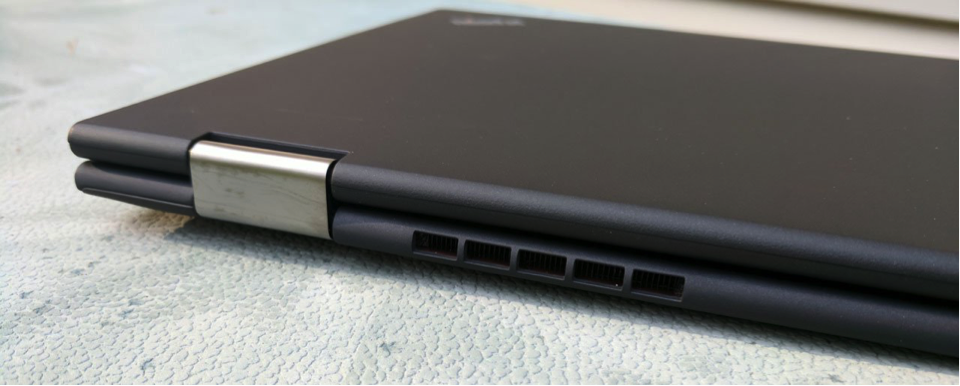|
Lenovo’s ThinkPad X1 Yoga a Perfect Game Machine!
September 04, 2017 The ThinkPad X1 Yoga fixes a problem with the X1 Carbon and adds a few other important enhancements that really put it over the top. The ThinkPad X1 Yoga, especially the version with the OLED display looks promising. It starts, as it must, with Lenovo’s business-class design, which is both attractive and durable. Looked at side-by-side with the ThinkPad X1 Carbon, look almost identical, but the X1 Yoga is just a hair bigger in both directions than the X1 Carbon. The X1 Yoga may look like the X1 Carbon, but there are some important differences too.
Figure 1: Lenovo’s ThinkPad X1 Yoga Source: Company
The X1 Yoga has two USB-C/Thunderbolt 3 ports, both with rapid charging capabilities and anti-fry protection. Either can be used to power the device as Lenovo has here, too, replaced its old proprietary docking solution with this industry standard. The X1 Yoga also features three full-sized USB 3.0 ports, a mini-Ethernet port with an included dongle, and an integrated ThinkPad Pen Pro. There’s also the expected dual-pointing solution, with the classic ThinkPad TrackPoint “nubbin” and a Precision Touchpad, plus an updated fingerprint reader. Inside, you will find the expected 7th generation Intel Core i-series processors and a variety of RAM and storage options. But the most unique differentiator is its OLED display. Lenovo had previously shipped the 2017 ThinkPad X1 Yoga with a more pedestrian LCD albeit with touch and pen capabilities. But it’s now available with a glossy 14-inch WQHD (2560 x 1440) OLED display. Coming in at just under 3 pounds, the ThinkPad X1 Yoga is about half a pound heavier than the svelte X1 Carbon, but as it’s a bit bigger, it still feels quite balanced. Battery life is an unknown. Given the growing investments in OLED capacity, we are often asked about other applications beyond smartphones and TV and whether they will be sufficient to take up some of the extra supply over and above ~1.8b smartphone displays. DSSC has forecasted the demand for Tablets and Notebooks as shown in the next figure. By 2021, demand could reach ~23 m according to DSSC and that represents approximately 67m 5.5’ displays, hardly a dent in the smartphone capacity, which by 2021 could reach 2.5b 5.5” displays. Figure 2: OLED Demand for Tablets and Notebooks Source: DSCC
|
Vertical Divider
|
|
Contact Us
|
Barry Young
|


